And when was invented?
Hi lovely makers! I am back with the first of two blog posts about the history of the sewing machine. It is something that I have never really stopped to think about that much but I thought it could be interesting.
Who do we need to thank for all the beautiful dresses we can make and wear today? Let's find out! :)
The first sewing machines
Does the name Charles Fredrick Wiesenthal ring any bells? No? To me either till I found out that he is considered the inventor of the sewing machine. You can see how the fella looked back in the 1700s.
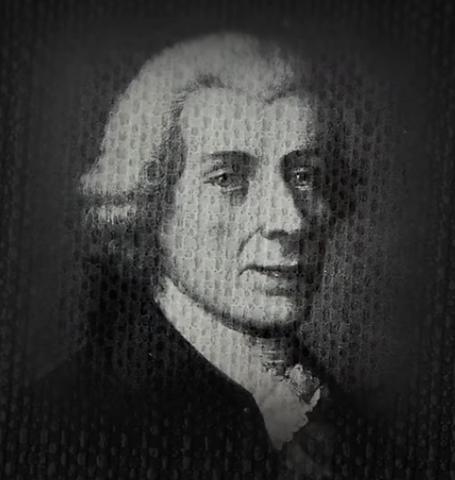
Dubnikov, CC BY-SA 4.0
Our friend Charles was a German-born engineer who worked in England. He was awarded the first British patent for a mechanical device to aid the art of sewing in 1755, for which I can only say, thank you Charles, we owe you big time!
His invention consisted of a double pointed needle with an eye at one end. Yoou can see one his first models below. (Glups! And I thought my Pfaff was hard to use when I bought it!).
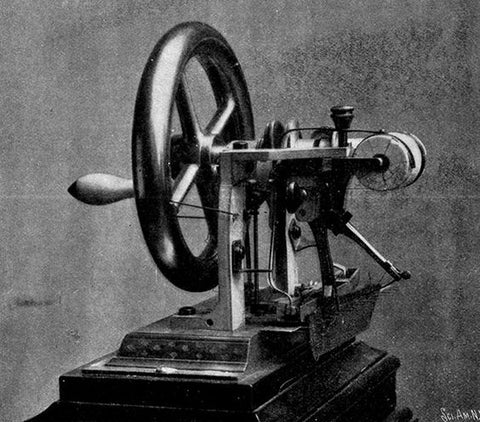
Slate Magazine
After Charles, it was British inventor Thomas Saint who, in 1790, created the first proper design of a sewing machine, which was supossed to be used on leather and canvas.
His device included more features than Charle's model, like an overhanging arm, a feed mechanism adequate for short lengths of leather, a vertical needle bar and a looper (ohhh, fancy!). Saint created the machine to reduce the amount of hand-stitching on garments, making sewing more reliable and functional (yay Thomas! You are a saint!).
His sewing machine used the chain-stitch method. A stitching awl would pierce the material and a forked point rod would carry the thread through the hole where it would be hooked underneath and moved to the next stitching place, where the cycle would be repeated, locking the stitch.
The only record of his machine is a copy made by a sewing machine manufacturer, William Newton Wilson, who found Saint's patent in 1874.
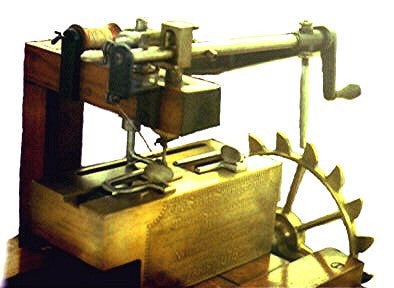
By Panjigally - Own work, CC BY-SA 4.0
The company made changes to Saint's model and its version can be viewed at the Science Museum in London. It is so interesting seeing how the different versions and models develop over time, just incredible! Look at Newton's sewing machine below.
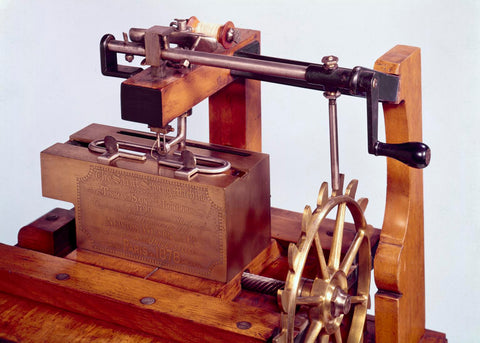
Science Museum Group Collection
© The Board of Trustees of the Science Museum
Going back a bit in time, the first widely used sewing machine was invented by a French tailor in 1829, Barthélemy Thimonnier.
His machine sewed straight seams using a chain-stitch like Saint's model. The machine was made out of wood and used a barbed needle that passed downward through the fabric to grab the thread and pull it up to form a loop to be locked by the next loop (this sounds quite familiar, right?).
Check the design below, also found at the Science Museum in London.

Science Museum Group Collection
© The Board of Trustees of the Science Museum
Things get serious...
The first sewing machine to combine all the elements of the previous half-century of innovation was the device built by English inventor John Fisher in 1844, a little earlier than the very similar machines created by, wait for it, American Isaac Merritt SINGER (yep, with capital letters) in 1851 and the lesser known, also American, Elias Howe, in 1845.
Let's check how our friend Singer looked like.
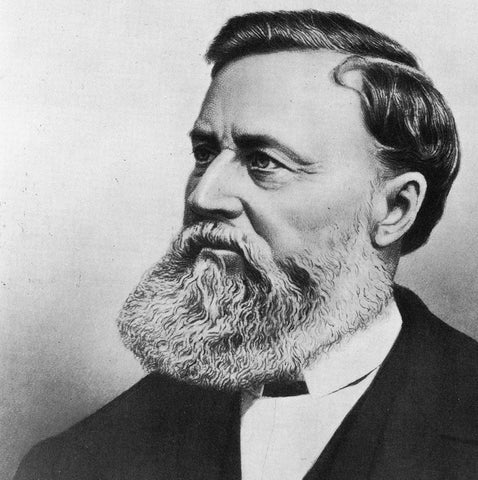
Hulton Archive/Getty Images
Now, let's unpack the drama...
Howe had the patent for Fisher's sewing machine that he used to create his own version but! in his, the fabric was held vertically, which was a huge improvement, as well as getting the needle running away from the point, starting from the eye.
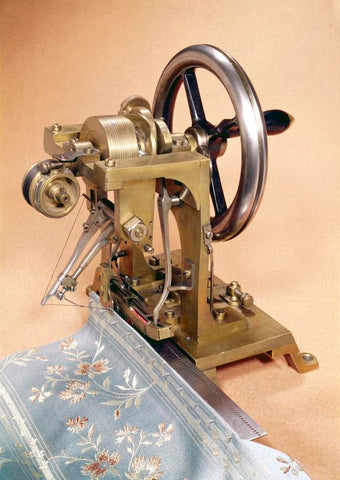
Science Museum Group Collection
© The Board of Trustees of the Science Museum
After a long trip to and from England, where he tried to sell his machine, Howe returned to America only to find out that others were infringing his patent and among them... who do we find? Our friend Singer! Bad Isaac, very bad!
Howe eventually won a case for patent infringement in 1854 (way to go Elias!) and was awarded the right to claim royalties from the manufacturers using ideas covered by his patent, including Singer. Isaac Singer then took out a license under Howe's patent and paid him USD 1.15 per machine.
The Sewing Machine War
At the same time as Singer and Howe were fighting in court, many other sewing machine companies were trying to sue each other for patent infringement throughout the 1850s, gaining the nickname of The Sewing Machine War (great title for a reality TV show, right?).
For example, American inventor, Allen B. Wilson, was sued by yet another engineer for patent infringement (surprise, surprise...). To solve the issue, he decided to partner with manufacturer Nathaniel Wheeler to produce a machine with a rotary hook instead of a shuttle. This made the machine far quieter and smoother, with the result that the Wheeler & Wilson Company produced more machines in the 1850s and 1860s than any other manufacturer.
Wilson also invented the four-motion feed mechanism that is still used on every sewing machine today. This had a forward, down, back and up motion, which drew the cloth through in an even and smooth motion. (I loved reading this part as I could totally see my own machine doing that!).
Let's take a look at his design...

Science Museum Group Collection
© The Board of Trustees of the Science Museum
And I think Allen also deserves a pic here, right? Just for making our machines quieter and smoother? ;)
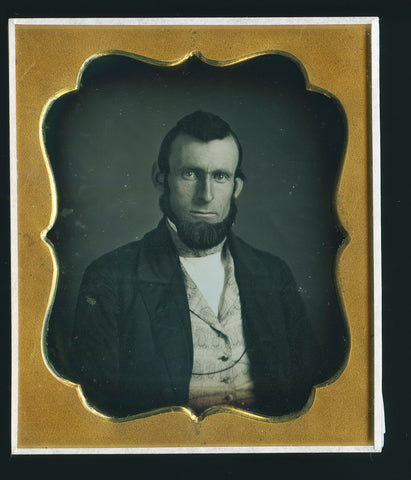
Nsnskz
Joining forces and what's next
In 1856, the so called Sewing Machine Combination or Sewing Machine Trust was created and consisted of Singer, Howe, Wheeler and Wilson, and Grover and Baker. These four companies pooled their patents, with the result that all other manufacturers had to obtain a license for USD 15 per machine. This lasted until 1877 when the last patent expired.
At the same time, a farmer from Virginia, James Edward Allen Gibbs, patented the first chain-stitch single-thread sewing machine in 1857. In partnership with British manufacturer James Willcox, Gibbs became a principal partner in Willcox & Gibbs Sewing Machine Company, whose machines are still used today.
Take a look at one of their most popular past models, found on Ebay for sale for less than 1.000 euros.
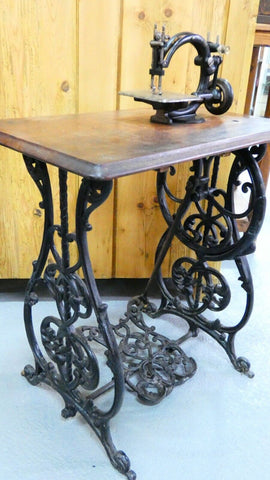
Ebay
Next time, I will talk about market expansion, the 20th century, electric machines and social impact of the creation of the sewing machine.
Let me know your thoughts on the comment section, thanks for reading and see you again soon!
Ana
xxx
Reference links:
Wikipedia
Science Museum London
